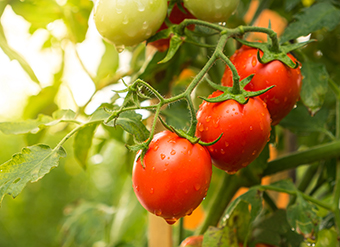Bring On More Branding by Mark Broxon

It was only seven or eight years ago that the topic of branding began to appear with frequency in Greenhouse Grower and other industry publications. Many began to consider what branding meant, and what their role in it should be.
Proven Winners is proud to be credited with bringing branding to horticulture. We firmly believe in both the concept and its future.
Some have considered branding to be simply developing a name or logo under which to sell plants. But creating a brand that is profitable to growers and retailers and provides real value to consumers is not easy. Instead, it is an ongoing and exciting process that, through research, innovation, and better plants, truly never ends.
And here’s why: The real job of true plant marketers is much more than just “branding” plants. The real job is the long-term process of creating and building value for growers, retailers and consumers.
Let’s step back 16 years to when the Proven Winners founders first met to develop the Proven Winners concept. It started with four unique plants–but equally important was the belief that better plants combined with strong marketing are good for the industry and the consumer.
Since that first meeting, the industry has changed greatly. Consider how many consumers today know the names Supertunia, Snowstorm, Superbells and Proven Winners versus a few years ago. Are growers and retailers selling these plants for higher prices? Do they sell quickly? Do consumers understand the brand promise, and are they getting a more beautiful garden? This is the real test for plant marketers if we are truly building value.
Branding Is Here To Stay
There is no doubt that branding is here to stay and will only get stronger. But only those who do the hard work of providing a strong value message will succeed. Over the past few years, we’ve already seen brands fall from the national scene, such as Flower Fields and Miracle Gro Plants. After gaining industry traction, the consumer value was not there. Others such as Wave petunias, Monrovia and Flower Carpet roses are succeeding at creating consumer value, although they are doing this in different ways.
What does the future hold for branding in horticulture? Looking forward, consider these three factors::
1) Grower and retailer interest in creating brands of their own, without a plan for where these brands fit, will decline while a reliance on national programs will increase. Proven Winners will continue to create value through innovative plants, market research, advertising, programs (Certified Garden Center and Roadshows, to name just a few) and ideas about how to enjoy plants in the consumer’s own lifestyle setting. However, it is becoming less likely that others can make this same commitment.
2) There is an increasing trend for consumers to seek out products they recognize and understand. In a recent consumer research study by Proven Winners at garden centers throughout the United States, 71 percent of shoppers ages 18-44 said they would seek out a “trusted” brand when buying plants compared to 36 percent aged 45 and up. This means that today’s younger consumer–our future consumer–has been trained to rely on brands like no other generation.
3) We need to make gardening easier. We’ve heard that before, but consumers increasingly do not have the time nor the exposure to gardening as did prior generations. Branded products–those conveying an understood promise–will be important to making the consumer’s shopping experience easier and even more rewarding.
We’d estimate today that 25 percent or so of product sold in garden centers is “branded.” Of this, some is just “tagged,” meaning it has a name attached to it, but the name has no consumer value. With the increased drive toward consumer awareness and value by Proven Winners and others, and with a changing consumer demographic towards value-added branded products, the reliance on known national brands will continue to grow. Packaging uniformity will increase, impulse shopping will be made easier, merchandising will continue to improve and consumers will have a better shopping experience. But most importantly, they will have a more beautiful garden.









